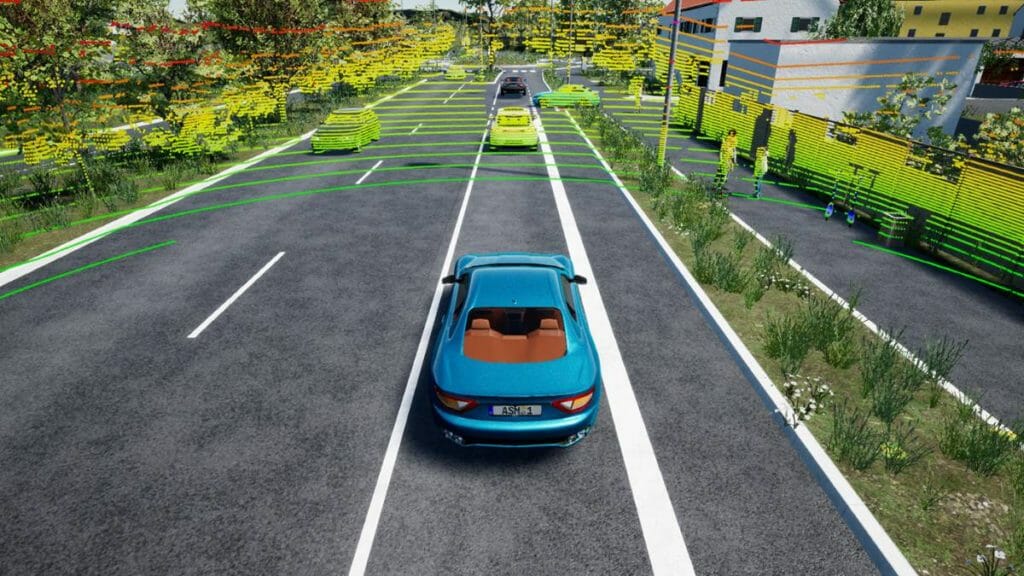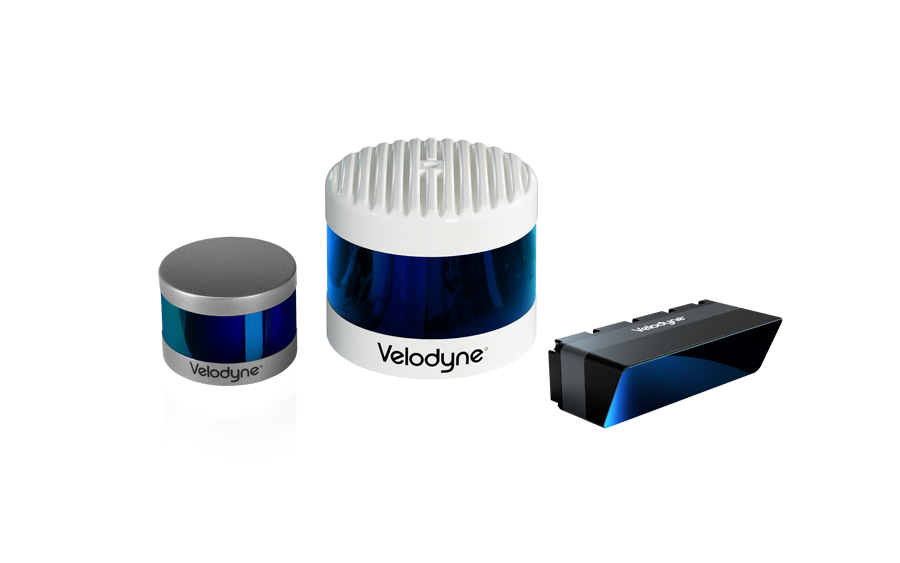
Lidar simulations accelerate system development and deployment by delivering a virtual environment to test automated driving capabilities in a range of roadway, weather and lighting conditions. Simulations support testing of extreme scenarios including corner and edge cases, and potential hazards such as emergency braking and obstacle avoidance.
dSPACE, which is an Automated with Velodyne partner, is a leading provider of simulation and validation solutions in the automotive industry. The combination of Velodyne’s high-performance sensors and Vella perception software, and dSPACE simulation software allows developers to test and validate solutions in a massively scalable variety of conditions before autonomous driving solutions reach the road.
To learn more about how simulation can improve the testing and validation process, we chatted with Vishal Jain, our Vice President of Software Engineering, and Caius Seiger, Product Manager, Sensor Simulation at dSPACE.
Caius: OEMs and Tier 1s need to simulate corner cases for the development and improvement of autonomous vehicles. Highly realistic simulation is the only feasible solution to address these cases because real driving maneuvers would be too costly, dangerous and time consuming. The number of scenarios would also be too high for real test drives.
Vishal: Data is the catalyst for all artificial intelligence and vision model development. However, data acquisition, preparation and curation are a time and resource intensive process to address different use-cases and scenarios. These constraints lead to depravity of datasets accessible for machine learning models and testing. When developers have limited access to datasets required for model training and testing, their research and innovation are slowed down. Using a simulator-driven approach offsets limited real data availability especially in rare occurrences such as corner cases. It improves development speed and model quality. This approach can reduce costs and help create an improved testing and validation process for a safe deployment.
Caius: Developers can easily create the sensor data they need for effective test and validation with AURELION, a dSPACE solution which allows for precise sensor and sensor environment simulation. Creating real-world testing scenarios, which otherwise would be impossible to test safely in the real world, can be done with just a few clicks. In cooperation with Velodyne, we implemented a sensor model for the Velarray H800, which behaves like the real sensor – but in a virtual world.
By feeding the point cloud into the Vella Development Kit (VDK), developers can classify and cluster the information. They also receive object information, such as pedestrians, which is necessary for the object recognition of the vehicle’s driving functions like emergency brake assist and sensor fusion. This object recognition can be done in simulation, providing a mighty tool for developers. They can achieve maximum realism in simulation thanks to our ultra-realistic simulation model.
Vishal: The VDK makes it easy for developers to pair our Vella perception software with our lidar sensors to speed innovation cycles for bringing full-stack solutions to market. Developers can use the VDK and Vella software to conduct lidar simulation to replicate real-world driving scenarios, such as cross-reference and fusion with camera-based perception for ADAS applications. This simulation allows them to focus their efforts on validating the safety and reliability of ADAS and AV applications.
Caius: Our simulation solution integrated with Velodyne’s sensors and software helps OEMs and Tier 1s to improve the safety of highly automated and autonomous vehicles. Developers can create the data they need for effective test and validation. The dSPACE simulation solution generates point clouds in real time to simulate objects. The simulation models help determine the most effective positioning of the sensor on the vehicle, as well as the sensor limits in corner cases.
Vishal: The VDK provides state-of-the-art perception software for directional sensors such as the Velarray H800 and Velarray M1600. The software makes it easy for developers to speed up innovation cycles for bringing full-stack solutions to market. The VDK allows customers in different market segments to focus on their application specific to their domain resulting in reduced time to market and tremendous savings on development expense. Our customers have used the VDK for short-range pedestrian detection, cross-reference and fusion with camera-based perception for ADAS applications, collision avoidance for industrial applications and more.
For example, VDK users can build an autonomous mobile robot solution with Vella software that utilizes data from our Velarray M1600 sensor to detect people and any 3D obstacles. For a last mile delivery application, the sensor data provides object and hazard detection to protect roadway users including pedestrians, bicyclists and pets.
Caius: Participating in the Automated with Velodyne program has given dSPACE the opportunity to emulate new Velodyne laser sensors, such as the Velarray, into our simulation solutions at an early development stage. The earlier in the development process that validation can be achieved, the faster new functions for autonomous driving can be safely launched by our customers. Our cooperation with Velodyne contributes to this process significantly.
Interested in Velodyne sensors and software? Visit us here: https://velodynelidar.com/m1600-vella/#lidar
Do you have any questions concerning simulation? The dSPACE experts are always happy to help. Simply contact us: https://www.dspace.com/en/pub/home/company/kontakt/contact_us.cfm?fuseaction=formular&tomail=1

Velodyne Lidar (Nasdaq: VLDR, VLDRW) ushered in a new era of autonomous technology with the invention of real-time surround view lidar sensors. Velodyne, a global leader in lidar, is known for its broad portfolio of breakthrough lidar technologies. Velodyne’s revolutionary sensor and software solutions provide flexibility, quality and performance to meet the needs of a wide range of industries, including robotics, industrial, intelligent infrastructure, autonomous vehicles and advanced driver assistance systems (ADAS). Through continuous innovation, Velodyne strives to transform lives and communities by advancing safer mobility for all.